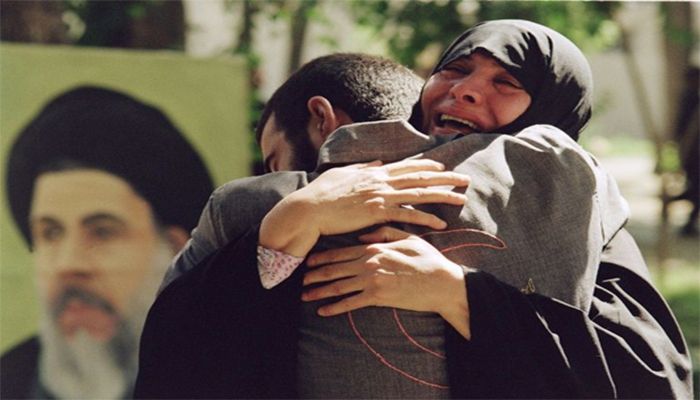
Desk Report
Publish: 20 Sep 2020, 10:50 am

Iraqi dictator Saddam Hussein sent troops to neighboring Iran on 22 September 1980, beginning an eight-year war in which hundreds of thousands were killed.
It was rooted in a border conflict between the two oil-producing nations in one of the toughest wars in the Middle East.
Five years earlier, in March 1975, an agreement signed in Algiers between Iran's Shah and Saddam Hussein — then vice president of Iraq — had sought to resolve the claim.
The Algiers accord ruled that their boundary was running along the middle of the Shatt al-Arab, a 200 kilometer (125 mile) long river created by the Tigris and Euphrates meeting, flowing into the Gulf.
But in April 1980, after the 1979 toppling of the Shah, Baghdad accused Tehran – now the Islamic Republic of Iran – of planning attacks.
Iraq called for the evacuation, claimed by both Iran and the United Arab Emirates, of three strategic islands in the Strait of Hormuz.
On September 17, Baghdad said the Algiers accord was null and void.
It demanded all of the Shatt al-Arab.
– Early Iraqi victories –
On September 22, Saddam Hussein sent soldiers into Iran.
His air force bombed airports, including that of Iran's capital Tehran, as well as military targets, and facilities for the oil industry.
Abadan's oil refinery, one of the largest in Iran, was shut down.
Iraqi forces had met with little opposition in the first weeks.
They seized the towns of Qasr-e Shirin and Mehran, and captured Iran’s southwestern port of Khorramshahr, where the Shatt al-Arab meets the sea.
Saudi Arabia and Kuwait swiftly offered support to Baghdad.
Arab nations — including the rich Gulf countries dominated by Sunni Muslim leaders — gave billions of dollars to Iraq.
Ayatollah Ruhollah Khomeini of Iran, a Shiite Muslim, saw Saddam Hussein as a bulwark against the Islamic Revolution.
Western countries, alarmed by Iranian clerics who overthrew Tehran's old ally, the Shah, sold weapons to Iraq.
– Iran pushes back –
Iran launched a massive counter-attack in Khuzestan 's southwestern oil province in March 1982, taking back its Khorramshahr harbour.
A truce was declared by Baghdad and troops pulled back.
But the ceasefire was rejected by Tehran.
Iran continues the fight, bombarding the major Iraqi city of Basra,and in July, begins an offensive on the southern front.
Iraq in August blockades the main oil terminal on Kharg Island, just off Iran’s coast.
From April 1984, the two sides engage in a “war of the cities”.
Some 30 cities on both sides are battered by missile attacks.
– Gas attacks –
In 1984, Iran accuses Iraq of using chemical weapons on its soldiers in battles in the marshes of Majnoon.
The UN confirms the accusations.
Baghdad strengthens its maritime blockade of Iran.
Tehran responds by attacking oil tankers loading up at Gulf ports of Iraq’s allies.
In 1986, as Iraq launches raids on Kharg, Iran’s army crosses the Shatt al-Arab and seizes the Faw Peninsula, in Iraq’s south east.
In June 1987, Iraq drops poison gas canisters on the Iranian town of Sardasht.
In March 1988, Baghdad is again accused of using chemical weapons– this time against its own population, in the Iraqi town of Halabja.
The town was controlled by Kurdish fighters, backed by Iran.
Some 5,000 were killed in Halabja by the gas attacks.
– At least 650,000 killed –
From April 1988, Iraq launches another offensive, taking back Faw,Majnoon and the southern region of Shalamsheh.
Iran is pushed back across the Shatt al-Arab.
On July 18, Ayatollah Khomeini accepts a UN Security Council
resolution — approved a year earlier and already accepted by Iraq –to stop the fighting.
“This decision was for me even more painful than taking poison,(but) I accepted that that was what God had decided,” Ayatollah Khomeini said.
However it is not known the exact number of those killed in the war, at least 650,000 died, about two-thirds of them Iranians, according to the French historian Pierre Razoux.
On 20 August 1988 a truce was announced.
Nevertheless, it would take another two years before the Algiers Agreement was restored, in August 1990, for Baghdad to withdraw its troops from Iran and exchange prisoners of war.
Subscribe Shampratik Deshkal Youtube Channel
© 2024 Shampratik Deshkal All Rights Reserved. Design & Developed By Root Soft Bangladesh